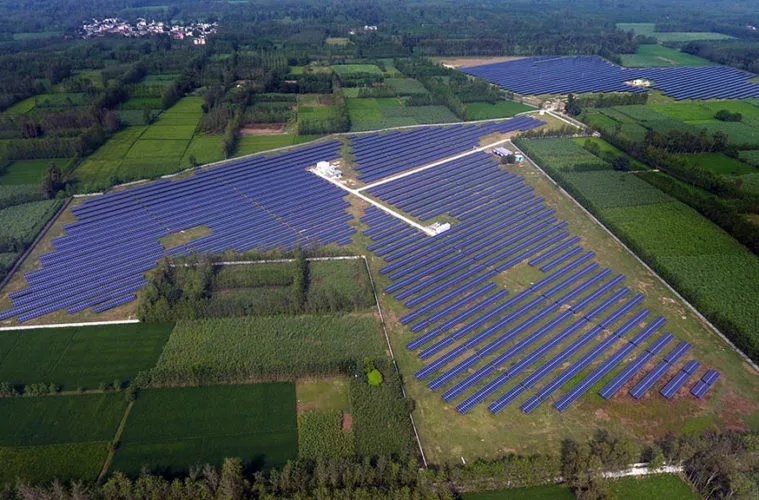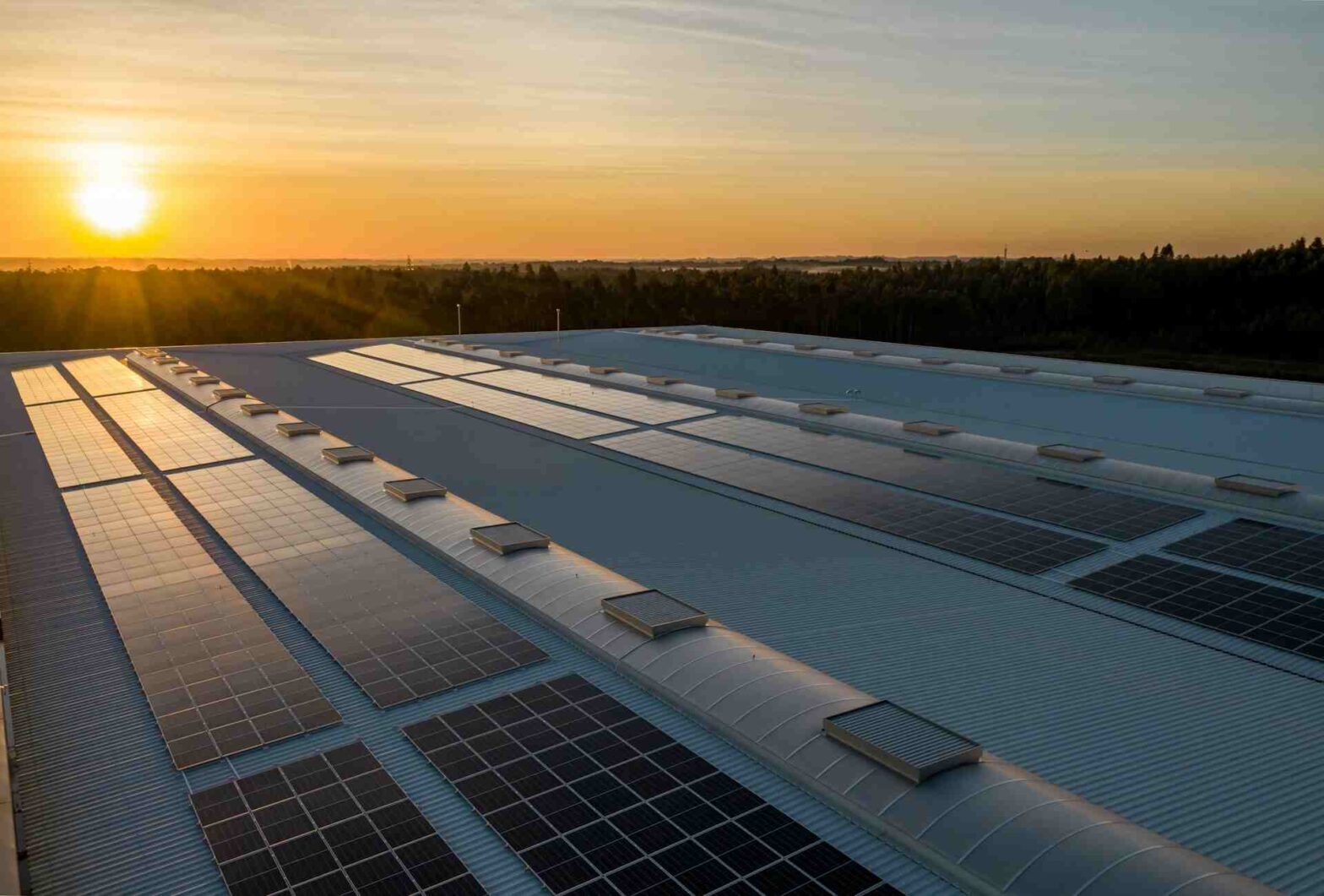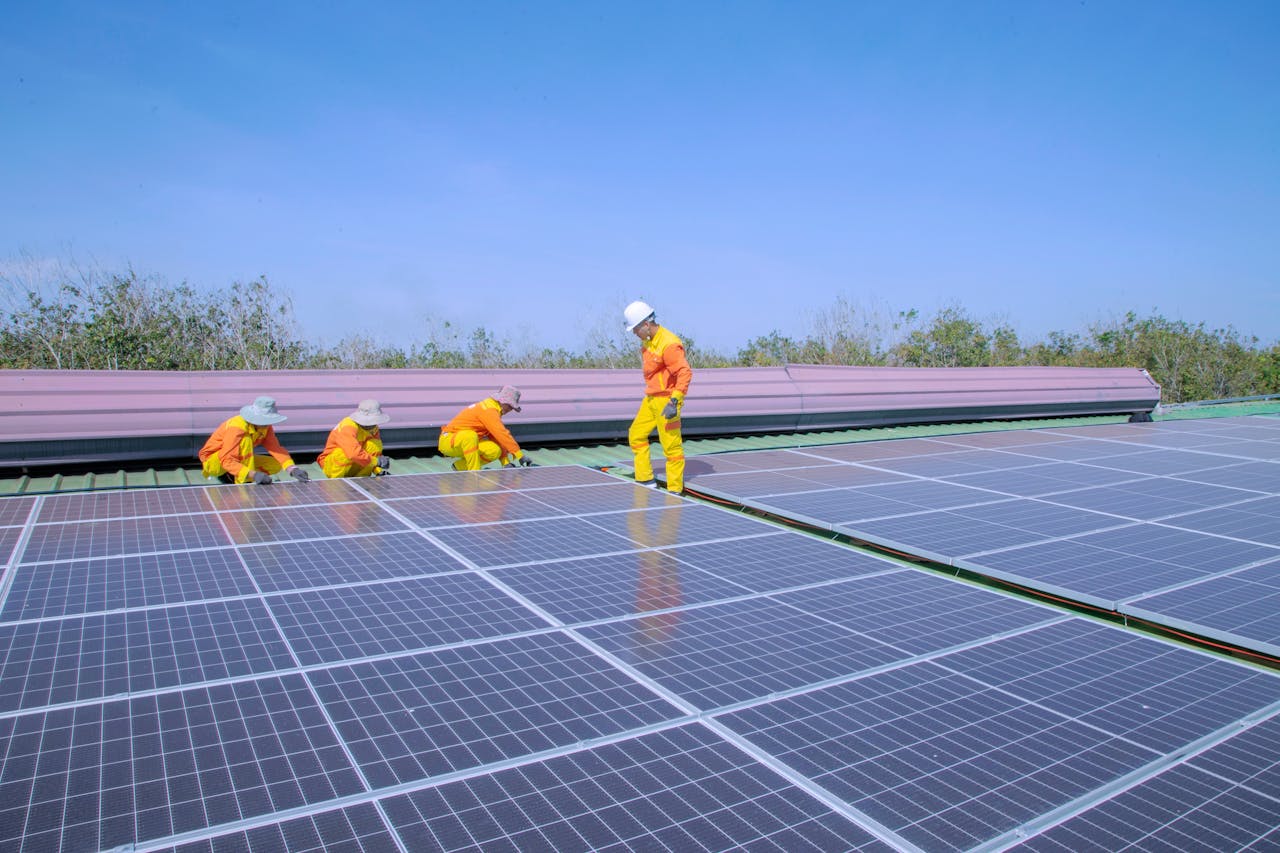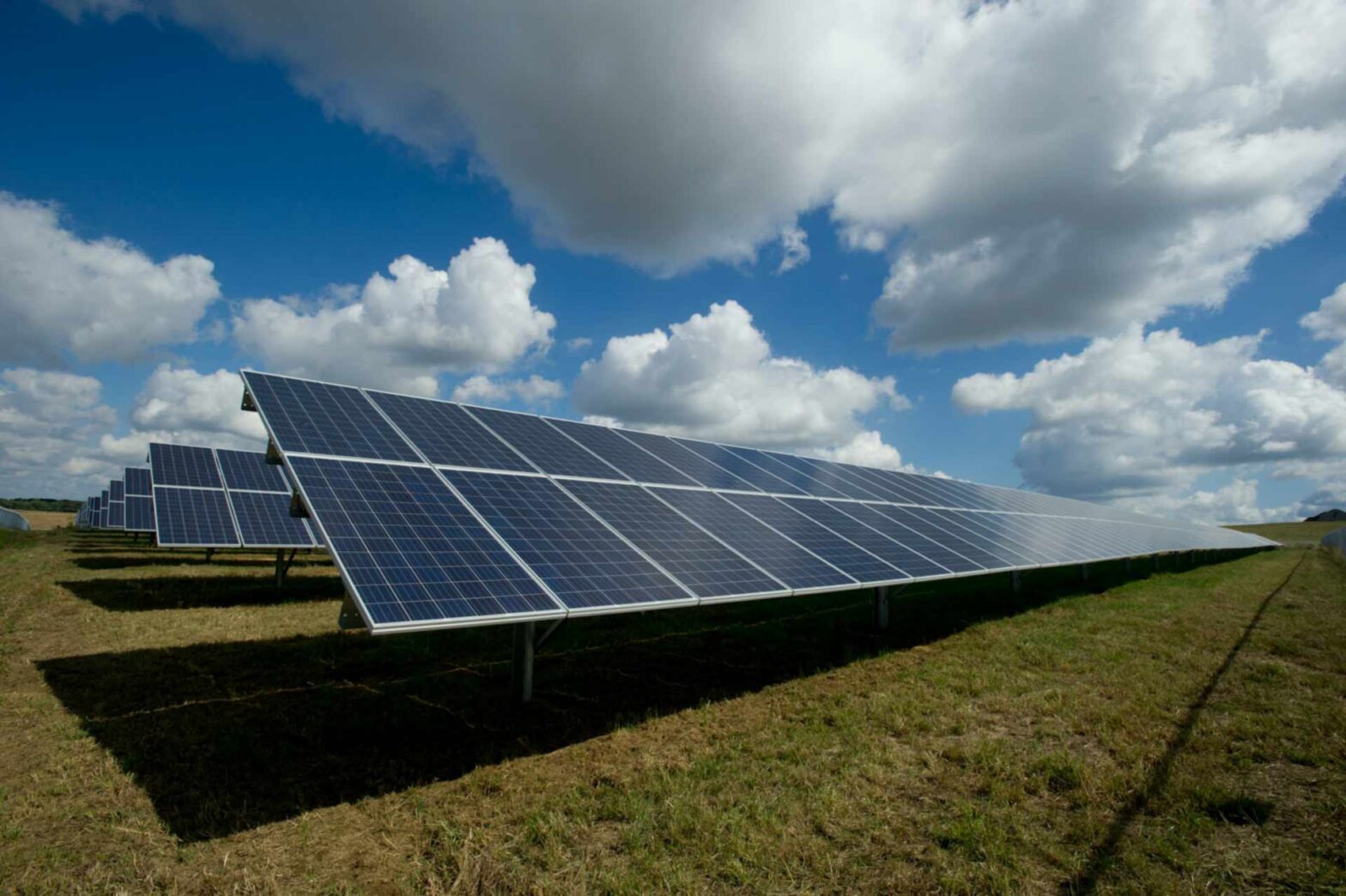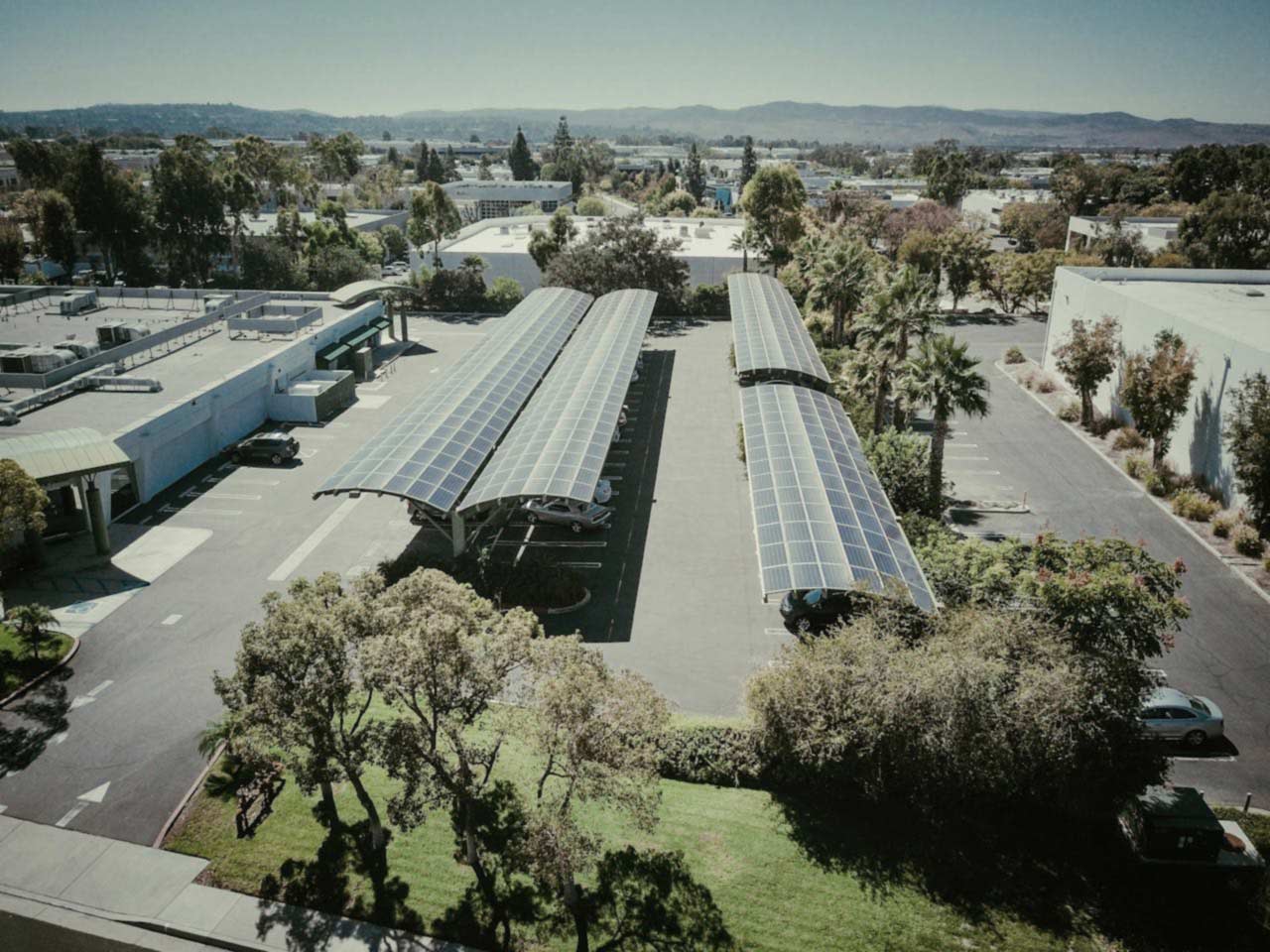Ground Mounted solar installations conjure up an image of large swathes of land dominated by the strong dark blue of solar modules, powering businesses, factories, and sustainable growth. As the appetite for solar energy grows in India, we see several landowners warming up to the idea of installing solar plant projects on their land to raise their savings and enter into PPAs (Power Purchase Agreements).
In this momentum to solarize land assets, ground mount solar systems have emerged as a frontrunner in the utility scale segment.
Progressing from Ideation to Actuation
As with any solar installation, the success of a ground mount solar system depends on various engineering and design factors. These include project size, module tilt, inverter placement, cable layout, and panel orientation. A detailed study of the site, conducted by experienced design engineers, is critical for aligning site specific requirements with solar output expectations.
When a ground mount project kicks off, the project passes through a certain number of definitive phases that dictate the speed and efficiency with which the project is readied for commission.
- Once the installation site has been allocated and the power consumption needs of the user have been determined, a detailed site survey is carried out by the solar EPC firm that is likely to carry out the complete installation.
- During the site visit, the project’s design and engineering team takes into account all of the site’s characteristics, including the land’s levelling requirements, to create the design of the solar power plant project.The ideal design is a perfect amalgamation of customer requirements and site realities. A solar installation design uses the details of the required plant capacity with the electrical components, modules, and physical structures, among other nitty-gritties.
- Once approved, the engineering designs are handed over to the project team that employs labour and materials to complete the project, delivering it to the client within the time and cost heads previously agreed upon.
- Regular cleaning of the panels and checks on the growth of plants or the creation of shading obstacles are all small minute details which, if left unattended, would reduce the efficiency of the solar plant and, ultimately, energy generation.
Also Read: Module Mounting Structures for Ground Mount Solar Installations
Uncovering greater levels of efficiency
Efficiency in a ground mount solar system can be discussed via various different prisms: of the modules, the electrical components, and the design, among a few others. Harmonising methods that maximise efficiency, along with the broad processes that are involved in installation, presents the opportunity to envision a truly complete solar installation. Below, we explore how thoughtful planning and engineering enhancements contribute to the improved efficiency of ground based solar panels.
Design Types in Ground Mount Solar Installations
Module Canopies
This type of installation is ideal to maximise the usage of land on which a ground mount solar system is carried out. Modules are installed in the form of canopies, i.e., they are raised significantly above the surface of the ground, allowing the space under the modules to be used. For instance, carports are systems where the space below the module canopies is used as parking spaces. This dual-purpose approach enhances the utility of ground based solar panels in commercial and urban settings.
Conventional systems
Conventional ground mount solar setups are the most widely used. These systems typically involve ramming or pile foundations that securely anchor the support structures to the ground.The support structure thus formed bears the weight of the module as well as the back support of the module. The back support of the modules is designed so as to clasp the modules at the designed tilt angle. Arriving at the right type of foundation for the installation is a critical part of the design as it dictates the stability of the installation.
Tracking systems
Tracking technology is increasingly being used in modern ground mounted solar systems. These systems use single-axis or dual-axis trackers that adjust the angle of the solar panels throughout the day by following the path of the sun. By optimizing the orientation of ground mounted solar panels, tracking systems significantly increase energy production and system efficiency.
Ground-mounted solar power plants are thus not only hugely important investments in clean energy, but they also generate savings for businesses, require minimal maintenance, and drastically reduce the operational costs of large power consumers, securing sustainable growth for future successes.
Conclusion
Ground mounted solar systems are revolutionizing India’s approach to large-scale clean energy generation. With their flexible design options from module canopies to advanced tracking systems – ground mounted solar panels offer an efficient and scalable solution for landowners, industries and utility providers. When thoughtfully planned and engineered, these installations can deliver significant energy savings, reduce operating costs and promote long-term sustainability.
As demand for renewable energy continues to grow, ground mounted solar solutions are emerging as a smart, future-ready investment for businesses and landowners looking to maximize both economic and environmental returns. With the right expertise and implementation, they not only support India’s energy goals but also pave the way for a greener, more resilient future.
